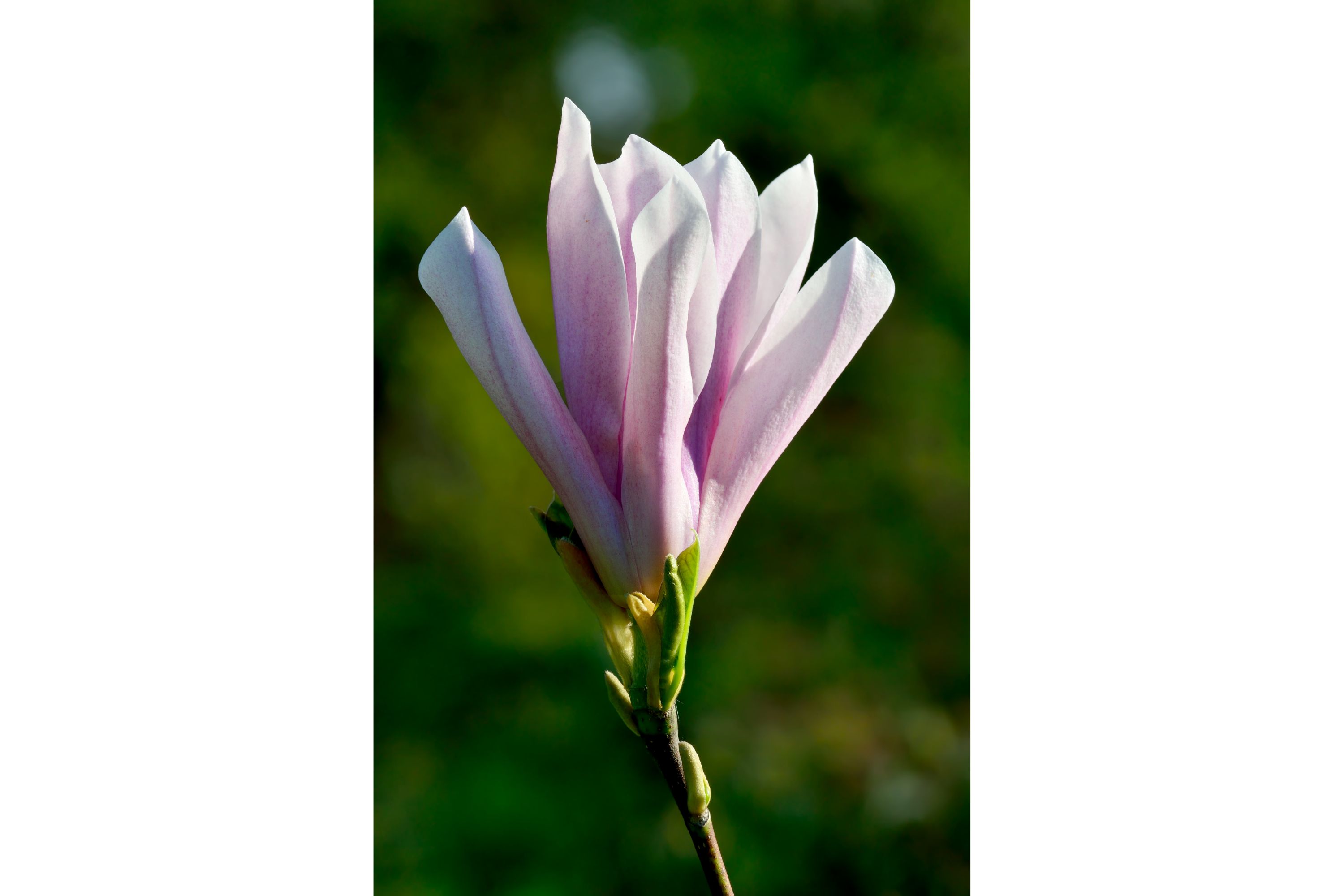Saucer magnolia
(Magnolia soulangeana)

Description
Magnolia soulangeana, commonly known as the saucer magnolia or tulip tree, is a deciduous tree species that is native to China. It is widely cultivated as an ornamental tree for its strikingly beautiful flowers and attractive foliage. Taxonomy and Nomenclature: Magnolia soulangeana belongs to the Magnoliaceae family and is part of the Magnolia genus, which includes approximately 210 species. The scientific name of the saucer magnolia is Magnolia soulangeana, and it was named after Chevalier Étienne Soulange-Bodin, a French army officer and horticulturist who collected plants in China during the early 19th century. Description: Saucer magnolias are small to medium-sized trees that typically grow to a height of 20 to 30 feet (6 to 9 meters) with a spread of 20 to 25 feet (6 to 8 meters). The tree has a rounded to spreading growth habit and forms a dense, bushy crown. The bark of the saucer magnolia is smooth and grayish-brown in color. The leaves of the saucer magnolia are large, ovate, and dark green in color. They are up to 8 inches (20 cm) long and 4 inches (10 cm) wide. The leaves turn yellow in the fall before dropping. The flowers of the saucer magnolia are the most striking feature of the tree. They are large, cup-shaped, and fragrant, with a diameter of up to 10 inches (25 cm). The flowers are pink to purple on the outside and white on the inside, with a faint purple stripe on the outside of the petals. The flowers emerge in early spring, before the leaves, and can last for several weeks. The fruit of the saucer magnolia is a cone-like aggregate of follicles that contains numerous small, red seeds. The fruit ripens in late summer to early fall and splits open to release the seeds. Distribution and Habitat: Magnolia soulangeana is native to China, specifically the provinces of Anhui, Hubei, Hunan, and Jiangsu. It grows in a variety of habitats, including forests, forest edges, and rocky slopes. Cultivation and Uses: Saucer magnolias are widely cultivated as ornamental trees in temperate regions around the world. They are prized for their stunning flowers, which make a dramatic display in early spring. Saucer magnolias are commonly used as specimen trees, in parks and gardens, and as street trees. They are also sometimes grown as espaliers, with the branches trained to grow against a wall or fence. Saucer magnolias prefer moist, well-drained soil and full sun to partial shade. They are relatively low-maintenance trees, but they may require occasional pruning to remove dead or damaged branches. Propagation of saucer magnolias is typically done through grafting or rooting of cuttings. The tree is not typically propagated through seed, as the seedlings can take several years to flower, and the flowers may not be true to the parent plant. Potential Problems: Saucer magnolias are generally healthy trees and are not prone to serious pest or disease problems. However, they may be susceptible to some fungal diseases, including leaf spot and powdery mildew. These diseases can be managed through proper cultural practices, such as avoiding overhead watering and improving air circulation around the tree. Saucer magnolias may also be susceptible to damage from heavy snow or ice, as the weight of the snow or ice can cause the branches to break. In areas with heavy snowfall or ice storms, it may be advisable to prune the tree regularly to reduce the risk of damage. Conservation Status Magnolia soulangeana is not currently listed on the IUCN Red List of Threatened Species, which assesses the conservation status of plant and animal species worldwide. As a widely cultivated ornamental tree, it is not considered to be at risk of extinction. However, it is always important to promote the conservation of all plant species, including those that are not currently threatened, through sustainable cultivation practices and conservation efforts to preserve their natural habitats.
Taxonomic tree:







